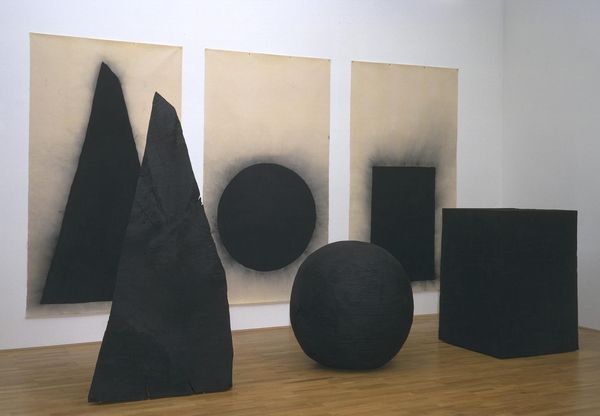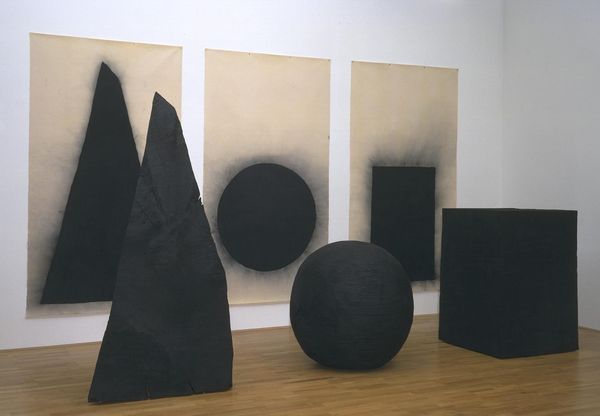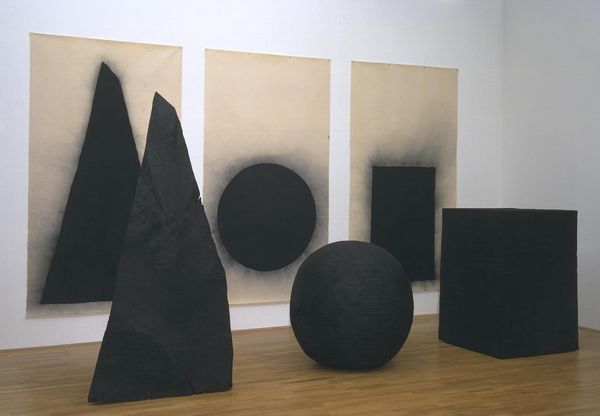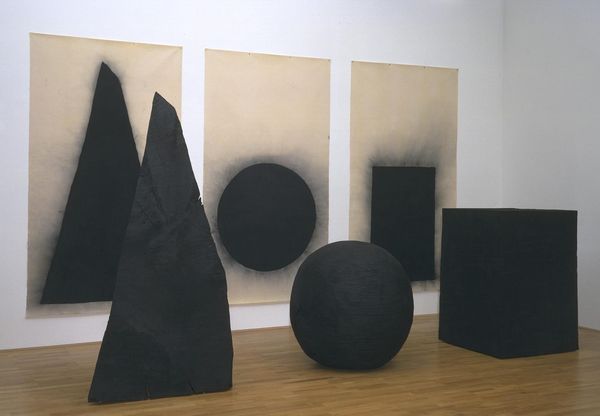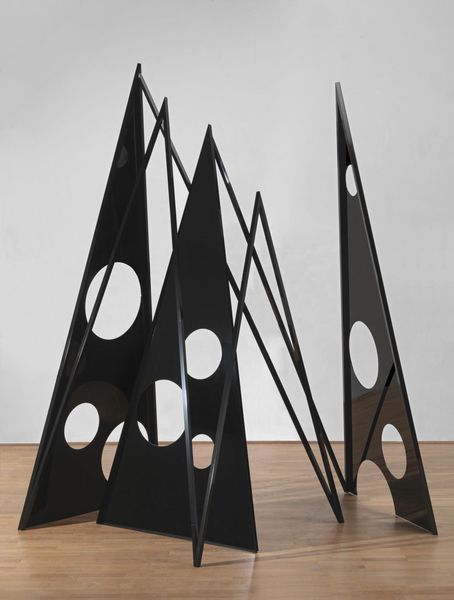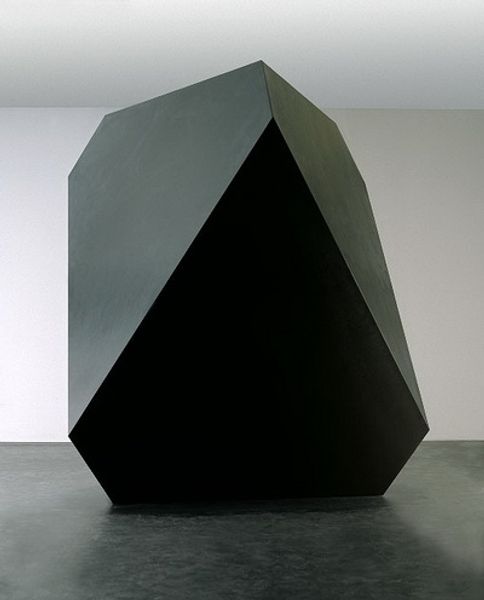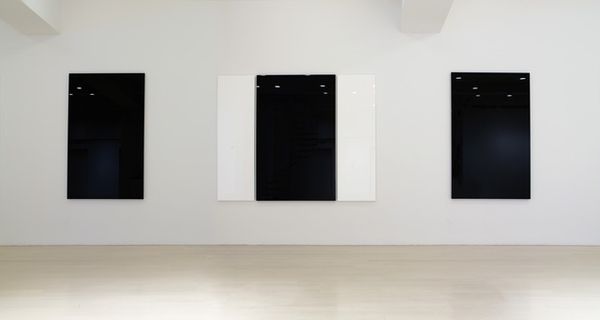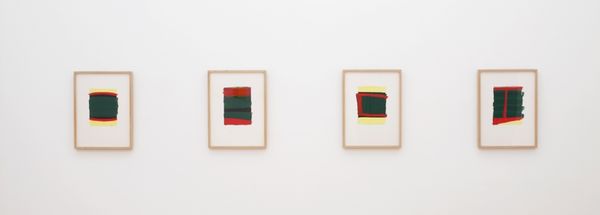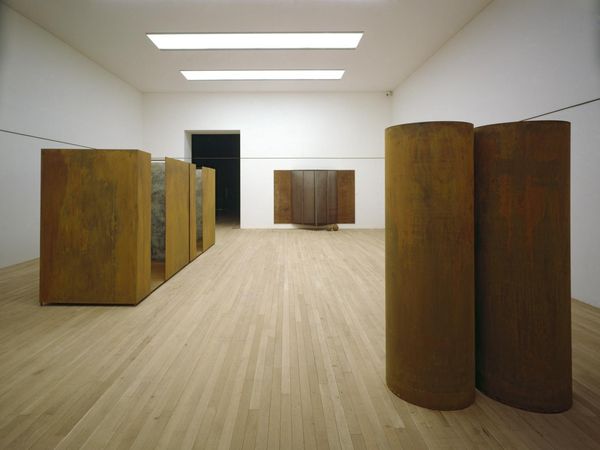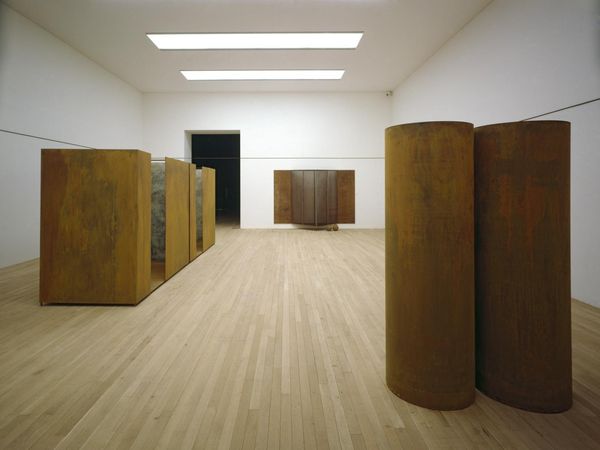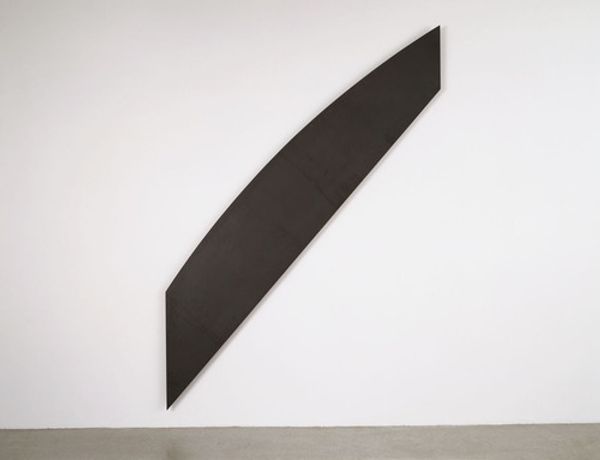
Dimensions: displayed: 3200 x 4500 x 3500 mm
Copyright: © David Nash | CC-BY-NC-ND 4.0 DEED, Photo: Tate
Curator: David Nash’s piece here is titled "Cube", and it's part of the Tate collection. Editor: It has a striking minimalist presence, doesn't it? The stark black forms against the pale backdrop create a sense of gravity. Curator: Indeed. Nash often works with natural forms, and here, he's exploring geometry and its relationship to nature and perhaps our perception of gendered forms. The contrast between the organic textures and the rigid shapes is very deliberate. Editor: The cube, sphere, triangle, and rectangle almost seem to be in conversation with their two-dimensional counterparts. There’s a tension there, a dialogue about materiality and representation. Is it the masculine or feminine form, or both? Curator: Nash's work frequently engages with the masculine and feminine in nature, using the materials as signifiers of gender identity, particularly through the lens of environmental impact. Editor: I see a tension between the object and its shadow, the solid and the ethereal. Curator: Precisely. Nash invites us to reflect on how we interact with, and impose form upon, the natural world. Editor: It’s a powerful commentary, rendered with such simplicity.
Comments
Join the conversation
Join millions of artists and users on Artera today and experience the ultimate creative platform.
tate 6 months ago
⋮
Cube is a wooden sculpture by the British artist David Nash, the surface of which has been charred so that it is a deep, matt black. Although the work’s title refers to the shape of the sculpture, its sides are not completely straight like those of a conventional cube, but rather display more organic lines in which irregularities in the shape of the wood are clearly visible. The wood grain can also be seen on all sides of the sculpture, beneath the striking black colour of its form. Cube is one of the six elements that make up Nash’s installation Pyramid, Sphere, Cube 1997–8, which consists of two further sculptures – Pyramid (Tate T07539) and Sphere (Tate T07540) – along with three charcoal drawings on canvas that depict opaque black pyramid, sphere and cube shapes at the same scale as the sculptures (see Pyramid, Tate T07542, Sphere, Tate T07543, and Cube, Tate T07544). The three drawings are displayed in a row on the gallery wall, with each appearing alongside its corresponding three-dimensional shape, which rests on the gallery floor in front of it. Although the spacing between the six elements of the installation depends on the dimensions of the room in which they are displayed, the drawings are usually positioned so that their lower edges are approximately 35 cm from the floor, and the spaces between the drawings can range between 5 cm and 30 cm, with the sculptures being centred on their corresponding drawing.
